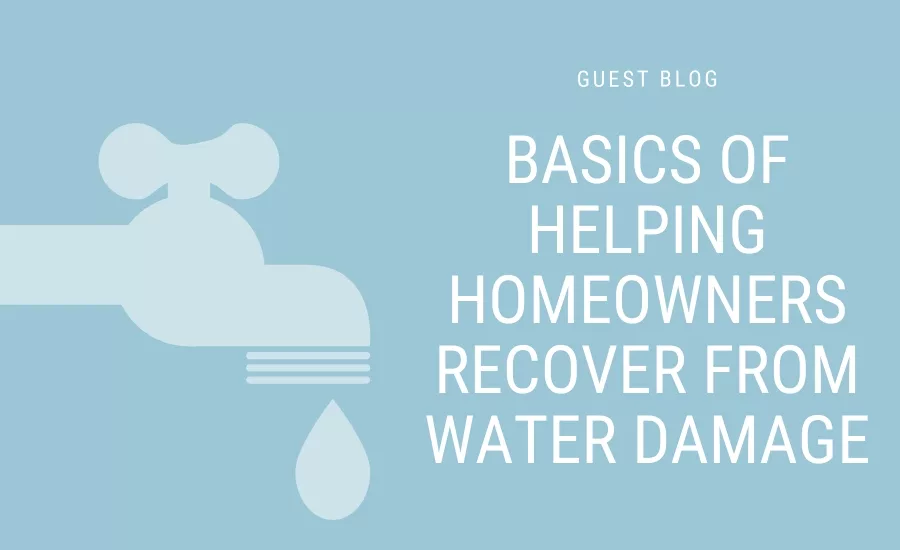Guest Blog
Basics of Helping Homeowners Recover from Water Damage

Flooding and water-related disasters are widespread. Also, they have caused many property owners quite a headache. And while water damage isn't something that can't be fixed, time and quick response are crucial during a water disaster.
While it’s common for property owners to want to rush the repairs so they can get their house back to its pre-damaged state ASAP, it’s the responsibility of the water damage restoration team to ensure that the entire process is carried out correctly and safely.
Here are some of the most critical points to keep in mind when handling a water damage situation.
Safety should be a priority.
In the event of a crisis, your primary concern should be the safety of everybody involved.
You’re already well aware that water and electricity are a lethal combination. So, it follows that in any flooding situation, the first thing you should do is switch off the electrical power in the flooded area. Afterward, close the main water valve to prevent any contaminants from entering the water system.
Lastly, should you feel the immediate need to wade through the water to check the flooded premises, don't forget to wear waterproof boots and safety gear.
Accurate assessment of the damage is essential.
There’s often more to flooding and water damage than meets the eye, which is why it’s crucial to identify the level of water damage in the area before going further with the mitigation and repair process.
Water damage is categorized into three levels.
Category 1 - water is generally clean, sanitary, and safe for consumption.
Category 2 - microorganism level in the water is too high and has the potential to cause sickness if someone were to ingest or get in contact with it.
Category 3 – water is severely contaminated and contains toxins and pathogens, which could be fatal.
Aside from identifying the level of water damage, a thorough assessment of the affected premises will give you a clearer picture of the extent of damage, and how much the repairs could cost.
Dry out the area properly.
When it's finally safe to enter the area, the next thing to do is get rid of water and moisture before they cause any more damage. However, if it's massive flooding you're dealing with, you'll have to wait for the flood to dissipate before starting the drying process.
For small leaks, you can use a fan to circulate the air and dry out the affected area. For heavier flooding situations, however, you may have to use a hand or electric pump to drain the water and then a large-capacity dehumidifier to ensure that there's very-little-to-no moisture left. When most of the house or the building is dry, open up the windows and let the air circulate. If the heating system still works, turn it up to drive what's left of the moisture and prevent mold growth.
Don’t forget to test for moisture.
With the area almost completely dry, it's time to remove waterlogged items from the affected area and sort them into piles. You can keep the ones that look salvageable and throw those that are beyond saving.
Before commencing work on the structure, though, make sure to run tests on the moisture level of the walls and floors. A moisture meter can help you check if the moisture on the walls and framings have dropped to a suitable level, while a flooring hygrometer is the most reliable tool for testing the dryness of concrete floors.
Carry out remediation and repairs as soon as possible.
Standing water is an ideal breeding place for pathogens and bacteria, while moisture can pave the way for molds to develop. When water damage is concerned, immediate action is necessary.
You see, if the remediation phase is not completed promptly, a category 1 and 2 damage can potentially turn into a category 3; a simple cleanup may turn into an extensive, complicated, and costly job. Time is of the essence when dealing with a water damage situation.